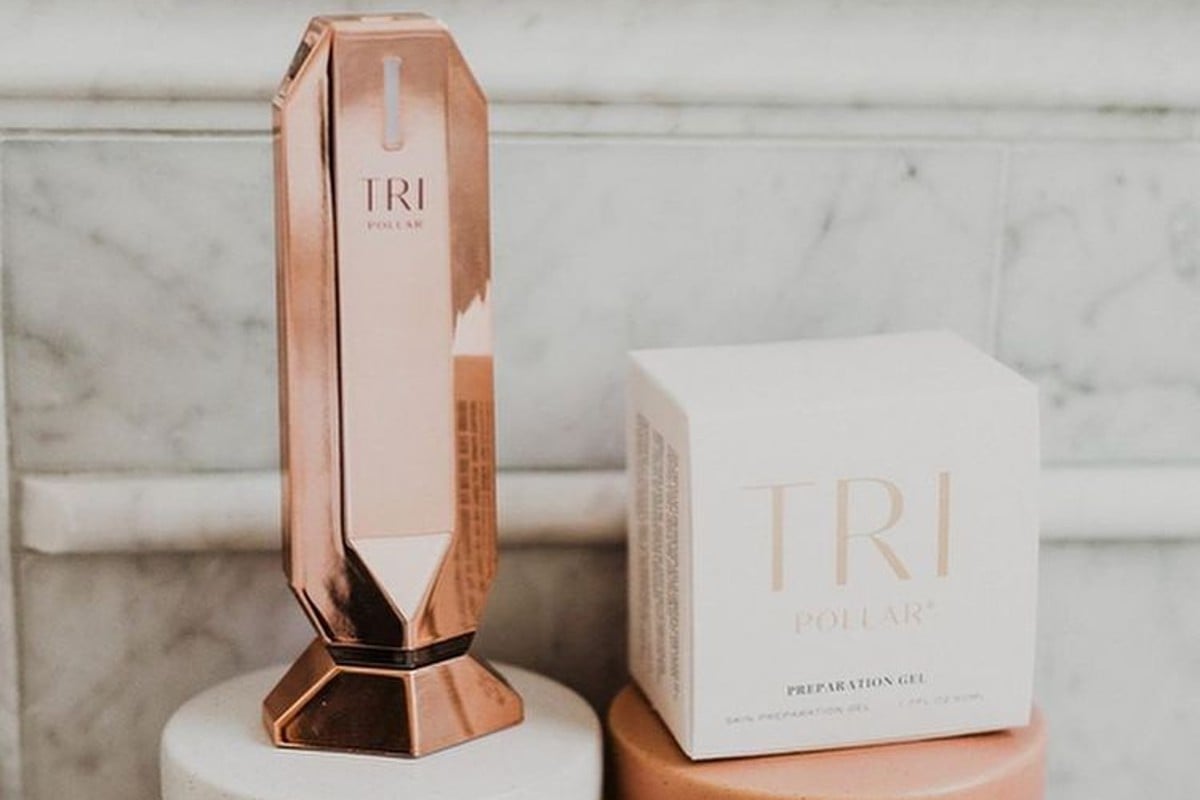It’s a common belief that exfoliation is off-limits for those with sensitive skin, but that’s far from the truth. In this article, we’re going to explore how to exfoliate sensitive skin and master the art of gentle exfoliation. You’ll learn how to remove dead skin cells without causing irritation and discover products and techniques that respect your skin’s sensitivity.
Should you exfoliate sensitive skin?
Yes, you can exfoliate with sensitive skin, but it’s all about being gentle and giving your skin more time to bounce back.
Here’s why: Sensitive skin often lacks the natural fats that form a protective barrier, which is why it can feel irritable or itchy. When you exfoliate, you’re removing dead skin cells, but in the process, you’re also removing some of these essential fats. This means your skin will feel extra sensitive in the week following your exfoliation as it works to rebuild what was lost. That also means one wrong move while exfoliating, and you’re faced with irritation or redness. The solution? Go easy with gentle exfoliating products and don’t do it as often as others might. By doing so, you’re giving your skin the chance to recover and rebuild its natural defenses.
Which exfoliator to use?
Sensitive skin reacts more to external factors and harsh chemicals, so the right exfoliation method is what sets apart an effective and gentle routine from an irritating one. There’s physical exfoliation, which involves rubbing grainy particles (scrubs) on the skin to remove dead cells. Next comes the chemical exfoliation, which uses acids (such as glycolic and lactic) to dissolve the glue that holds dead cells together. And finally, the enzyme peel, which uses fruit enzymes to remove the surface layer of skin.
Physical exfoliants—like scrubs—are too abrasive for the face and can cause micro-tears in the skin, so they’re a hard no. There are better, milder alternatives to exfoliate sensitive skin. Our best recommendation is chemical exfoliants with gentle acids like polyhydroxy acids (PHAs) or low concentrations of alpha hydroxy acids (AHAs). These work by dissolving dead skin cells without physically rubbing the skin. Enzyme-based exfoliants, derived from fruits like papaya (papain) and pineapple (bromelain), are also a good choice. They offer a mild exfoliation by breaking down the proteins in dead skin cells. They are less abrasive and can be a good alternative for sensitive and reactive skin.
How often to exfoliate sensitive skin
Most dermatologists recommend that those with sensitive skin only exfoliate once a week. This gives the skin enough time to heal and restore its natural protective barrier. By spacing out exfoliation with a 1-week break, you also make sure you don’t disrupt the skin’s natural renewal cycle, which takes about a month. During this time, your skin works to restore its protective fats and oils. Excessive exfoliation can disrupt this process, leading to increased sensitivity, dryness, redness or even breakouts.
How to exfoliate sensitive skin
- Use a mild exfoliator: Look for products with polyhydroxy acids or low concentrations of AHAs. A 5-10% lactic acid peel is one of the best options for sensitive skin because it is the mildest of the exfoliating acids. A glycolic acid toner is also a good choice for less intense exfoliation suitable for daily use.
- Perform a patch test: Before applying the exfoliant over your entire face, do a patch test on a small area to gauge how your skin reacts to the product. Apply a thin layer to a small patch of your face and rinse it after 10 minutes. If it’s a leave-on exfoliant, don’t rinse. Wait 48 hours before applying other products to that area. You can safely use the exfoliant if you don’t experience severe irritation.
- Cleanse your skin: Before applying the exfoliant, cleanse your face with a mild, fragrance-free cleanser to remove oil and dirt. Pat your skin dry with a soft towel.
- Apply the exfoliant: Some exfoliants require application on dry skin, while others work best on moist skin. Apply as directed, usually with a cotton pad. Don’t apply too much pressure or use too much product. A thin, even layer is sufficient.
- Leave it on or rinse it off: If it’s a leave-on exfoliant, let it absorb without rinsing. These exfoliants are formulated to be gentle and work over time. After application, wait a few minutes before applying other products. On the other hand, if it’s a rinse-off exfoliant, gently wash off the solution with lukewarm water after a few minutes and then follow with a hydrating serum and moisturizer.
- Serum and moisturize: After exfoliating, apply a hydrating serum and then a fragrance-free moisturizer to soothe your skin and restore hydration. We recommend using moisturizers that are formulated for post-chemical peel care. These are often made with ceramides, cholesterol, and fatty acids—key ingredients that restore the essential fats lost during exfoliation.
- Monitor your skin: Pay attention to how your skin responds in the week following the exfoliation. Are you experiencing irritation? Reduce frequency or switch to milder products. If you don’t notice a change in skin texture after a month of exfoliation, consider using more intense products.
What else
- Use your exfoliant after your cleanser and toner and before applying serums or moisturizers. After exfoliating, apply the rest of your skincare products in order of their texture, going from the thinnest to the thickest. Avoid using occlusives such as Vaseline immediately after exfoliation—they create a heavy film on the skin’s surface that can hinder the natural shedding process of dead cells.
- It’s best to exfoliate at night, as the process can make the skin more sensitive to sunlight. And use sunscreen the next morning.
- Avoid retinol, benzoyl peroxide, or other exfoliants for at least 24 hours after exfoliation. Stick to one exfoliating product to avoid over-exfoliation.
- Sun exposure, sulfate-based cleansers, microneedling, laser treatment, and other cosmetic procedures are a big no-no after exfoliation.
- After exfoliation, your skin will be more receptive to the ingredients. If hydration is your goal, use a serum rich in hyaluronic acid, glycerin, or aloe vera to soothe and hydrate the skin. If you’re not worried about dry skin, we recommend a peptide serum after exfoliation to boost skin firmness and reduce fine lines.
- Less is more. Start with exfoliating once a week and observe how your skin reacts. Gradually increase if your skin tolerates it well, but avoid daily exfoliation.
- Beware of the pH level. The skin’s natural pH is about 4.7, slightly acidic. Using an exfoliant with a similar pH range can minimize irritation. Exfoliants with a low pH are usually more effective, but they can be more damaging to sensitive skin.
- Avoid scrubs with large particles (like nut shells or fruit pits) as they can create micro-tears in the skin and trigger inflammation. Finely milled, uniform scrubs are preferable if you choose a physical exfoliant.
- Exfoliation creates cracks in the skin’s natural protective barrier, which is made of oils and fats. That’s why we recommend applying a night cream that’s formulated to restore this barrier. Use the cream in your nighttime routine, applying it right after exfoliation and continue to do so until your skin has healed.
Read next: 12 Best Organic Exfoliators for Sensitive Skin
Summary
When exfoliating sensitive skin, prioritize products that are both gentle and effective. Start by adjusting the frequency of exfoliation according to your skin’s tolerance. Your routine should be rich in moisturizing and skin-restorative ingredients to restore the skin’s natural barrier.
An effective exfoliation routine for sensitive skin would look like this: in the evening, cleanse with a sulfate-free, fragrance-free cleanser, use a pH-balancing toner, exfoliate with a gentle lactic acid peel or PHA product, then use a peptide serum and finish with a ceramide cream. In the morning, change the serum to one with hyaluronic acid and the cream to a lightweight lotion. And don’t forget to apply sunscreen.





